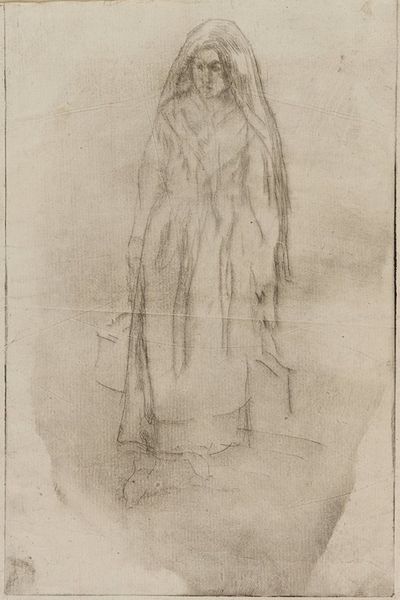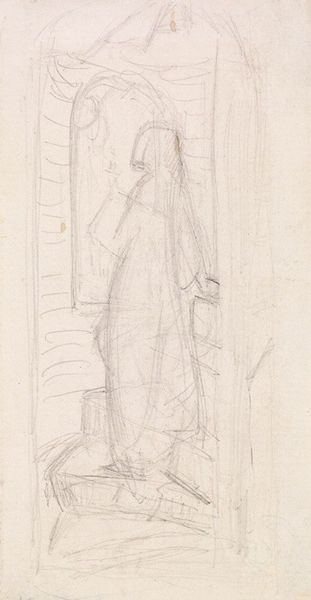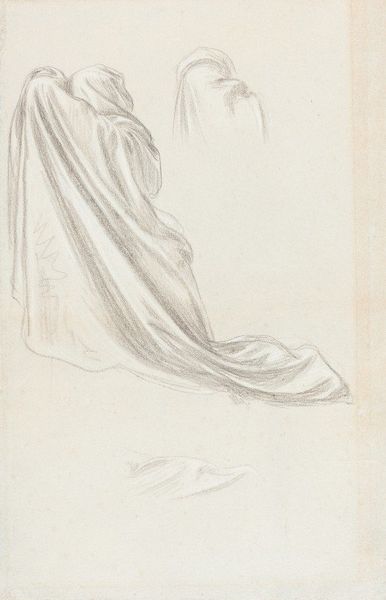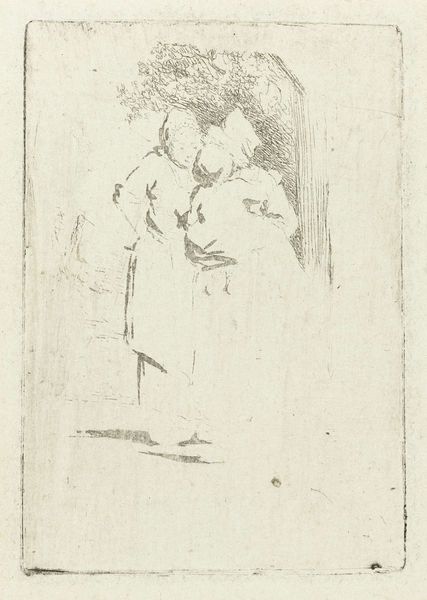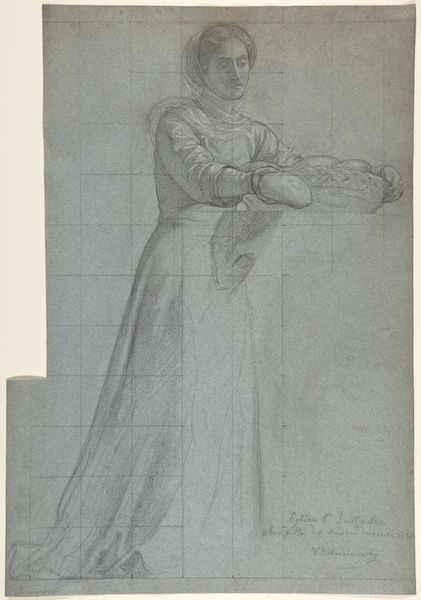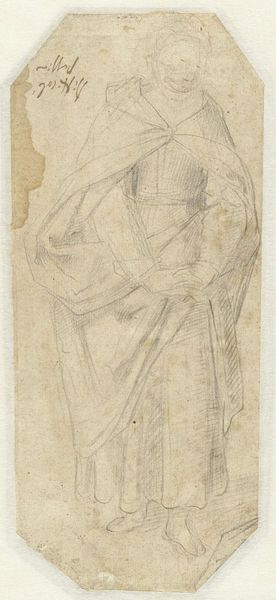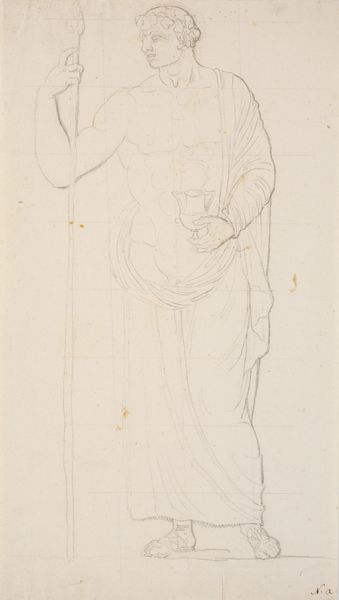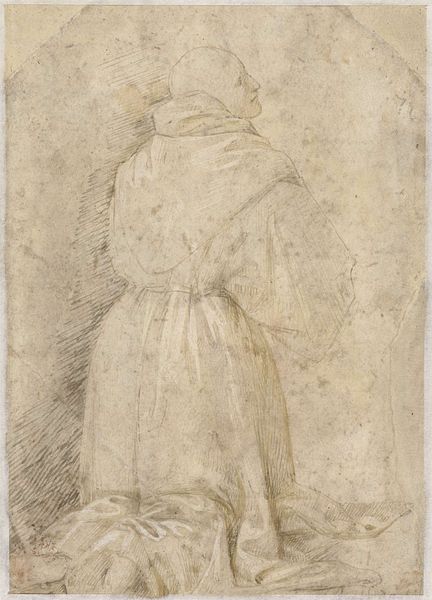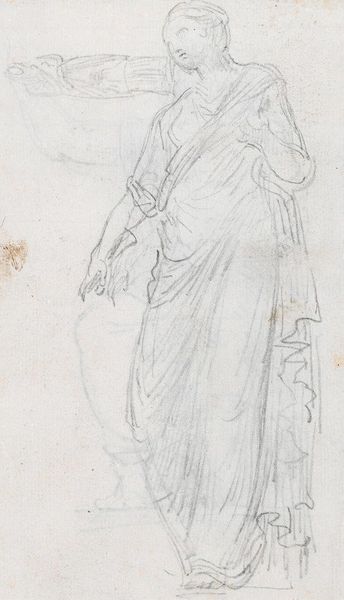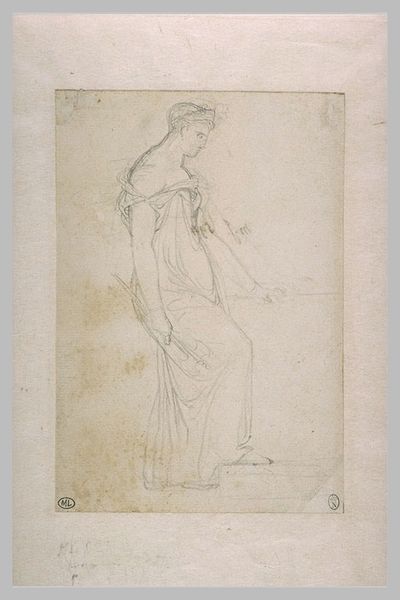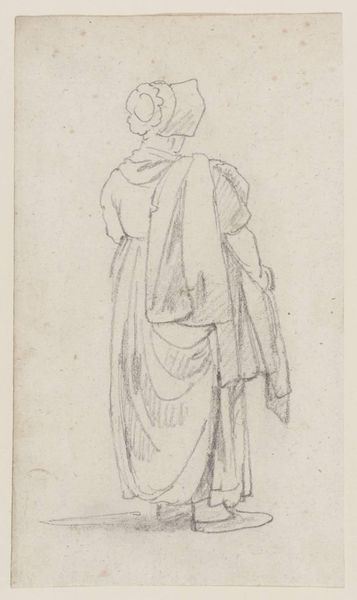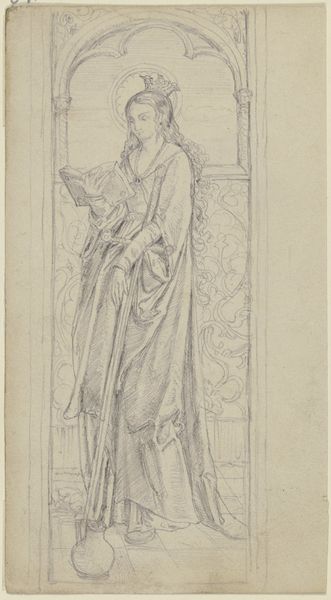
Dimensions: plate: 19.9 x 16.5 cm (7 13/16 x 6 1/2 in.) sheet: 23.8 x 21.6 cm (9 3/8 x 8 1/2 in.)
Copyright: National Gallery of Art: CC0 1.0
Curator: Cuno Amiet’s delicate drawing, "The Artist's Wife," created sometime between 1900 and 1925, uses pencil and print techniques to capture a fleeting, intimate glimpse. It has a haunting presence about it. What's your initial impression? Editor: Ethereal, almost faded, like a memory. The light seems to emanate from the paper itself, making her appear like a spectral vision. The pencil strokes are so light and thin that it almost isn’t there! Curator: It certainly teeters on the edge of visibility! Given the period and subject, what symbolism comes to mind? Editor: The wide-brimmed hat immediately evokes the Belle Époque—an age of optimism and transformation but, looking closer, it carries an echo of disguise. Her figure, deliberately blurred, seems to invite mystery, becoming almost an icon of veiled emotion and domestic secrets. I also pick up notions of the muse. What do you think? Curator: Absolutely, and that veiled quality gets at something very personal I find compelling here. Amiet captures her in this quiet domestic moment, yet her posture and averted gaze imply inner thoughts, creating that distance that only the most loving partnerships understand. A strange sense of intimate distance permeates, doesn’t it? Editor: It does! Considering that art is inevitably imbued with symbolism, could this seemingly simple image, made only with pencils and a printing technique, point toward the tensions beneath the surface of the most tranquil unions? Curator: Yes, precisely! She embodies both presence and absence; it's about more than just representing her likeness, but conveying the layered experience of existing alongside her. In a curious way, Amiet has actually achieved the effect of “presence” by being absent in his lines, light with the delicate gesture. Editor: That resonates deeply. By only implying the image, instead of defining it completely, we allow ourselves to feel the hidden layers. This transforms the woman from a static representation of merely being an artist’s partner into an accessible form. She carries an etherealness that welcomes interpretation rather than projecting simple, clear information. Curator: I appreciate your seeing the power within these open questions. I suspect he found that this subtle medium became a sort of dialogue, of its own, about their shared existence! Editor: Ultimately, Amiet makes me think that in any enduring connection between humans, we find more of the beautiful unknown rather than knowing anything about them concretely. And thank goodness!
Comments
No comments
Be the first to comment and join the conversation on the ultimate creative platform.
